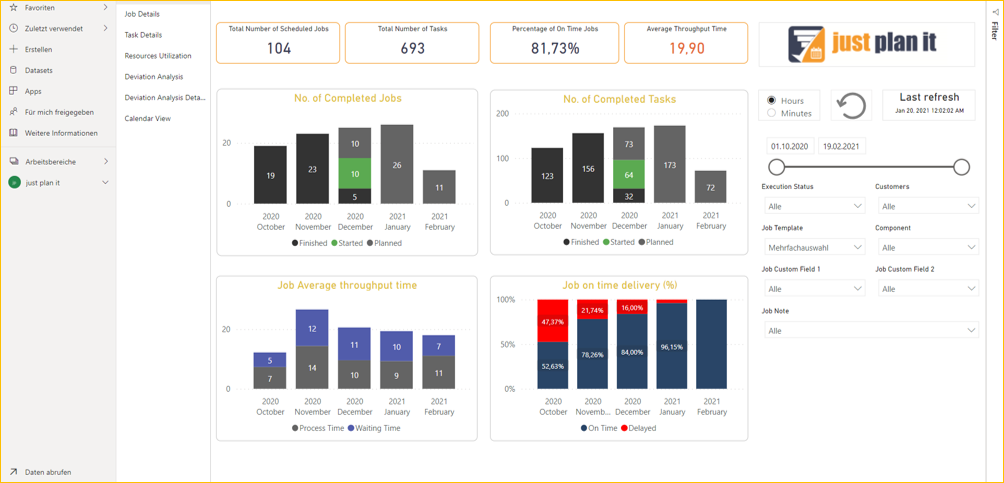Menu

Managing a high-mix low-volume (HMLV) machine shop is a master challenge. In this regard, there is no doubt that successful scheduling is not only a necessary evil but the strategic key to profitably run and grow a job shop.
There are various approaches of production scheduling
But they all have one thing in common: naturally, they are made for the planner. Hence they focus on providing functionality to enable the planning person to understand all the details of operations of the entire plan. This is including all data of all jobs and all tasks of the entire order backlog. That is needed to take the right scheduling action. But the perspective of a manager or job shop owner is different.
 In this blog, I outline why a production scheduling dashboard brings very high value to the manager and I show an example of how a production scheduling dashboard for a high-mix low-volume manufacturer can look and feel like. But let´s start with the four core reasons why an HMLV manager should have a dashboard that integrates with the scheduling tool.
In this blog, I outline why a production scheduling dashboard brings very high value to the manager and I show an example of how a production scheduling dashboard for a high-mix low-volume manufacturer can look and feel like. But let´s start with the four core reasons why an HMLV manager should have a dashboard that integrates with the scheduling tool.
To successfully manage the complexity of an HMLV business the manager needs to have a full view of the shop's overall performance. Compared to the scheduler the manager is in the highest level perspective. Therefore a production scheduling dashboard provides aggregated figures.
These aggregated figures give a clear view at first glance by showing manufacturing KPIs (key performance indicators), such as:
With such a special set of critical measures, the manager of an SMB manufacturer will get a seat in a tailor-made cockpit to productively hold the reins in his hands.

To get the best understanding of critical aspects the dashboard allows the manager to easily drill down from the top-level into the details. Therefore production scheduling dashboards user interfaces are interactive. In this manner the manager can click from aggregated KPIs into the underlying details; e.g. to see why a job can or could not be delivered in time.
Scheduling tools are made to plan future operations. Hence they normally focus on the related planning horizon and not on administrating or archiving data of the past. But historical data add value to the dashboard as the manager can better evaluate the performance over the timeline. Therefore production scheduling dashboards integrate based on incremental data interfaces to provide the entire timeline of KPIs. This enables the planner to keep the planning tool lean by deleting finished jobs and focusing on scheduling started and non started jobs. On the other hand, the production scheduling dashboard provides all data – also historical data – to be shown in the KPI timelines.
Overall the manager gets an incredibly useful tool that is automatically fed with scheduling data and with which he can assess the performance of the business at first glance at any time.

To see a production scheduling dashboard in action that meets all four requirements described, I strongly recommend to watch the webinar we recorded on 20 January 2021.
For more information about the just plan it dashboard, please have a look at the production excellence dashboard detailed page.
just plan it is a production scheduling software plus scheduling tools & best practices to help high-mix low-volume make-to-order manufacturers gain transparency and control over their shop operations. The software plus its methodology is used by thousands of people around the globe. They consistently achieve improved on-time deliveries, shorter lead times, and better utilization of their resources.
As just plan it is not just software, but a lot of processes and best practices, we recommend that you start with an exploratory meeting. If we agree that there is a fit between your requirements and our approach, we'll build a prototype for you.
Hence, it all starts with a meeting. Book that meeting now.
Made with by BOYUM IT SOLUTIONS GmbH (Copyright © 2024) Read our Privacy Policy & Terms of Service
No Comments Yet
Let us know what you think